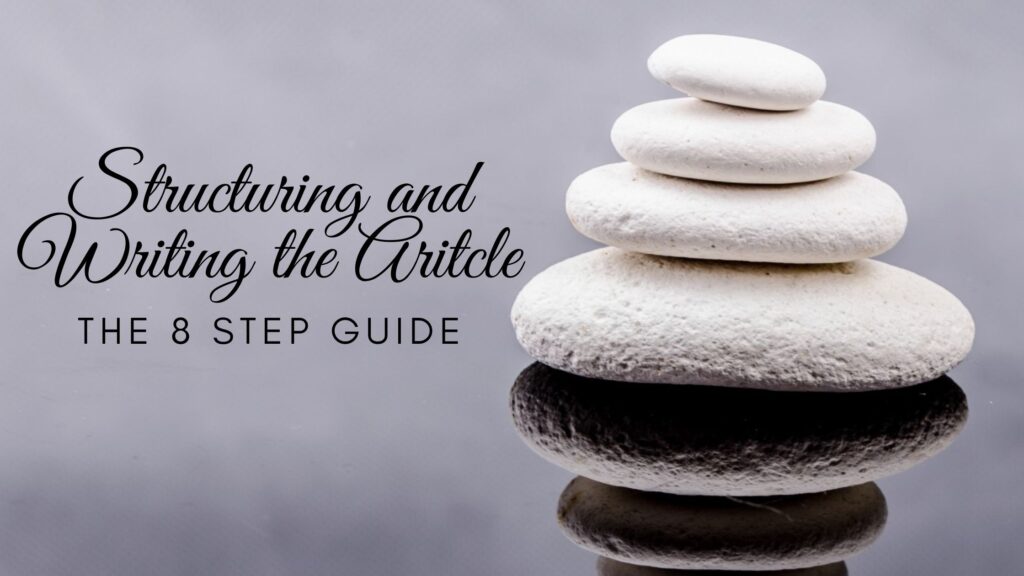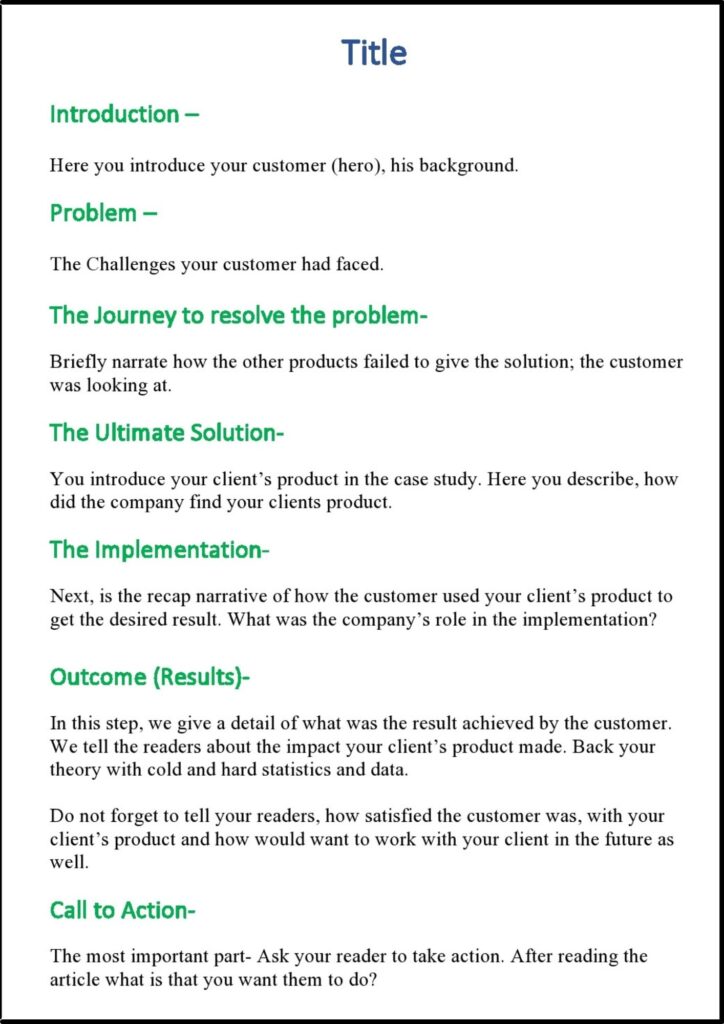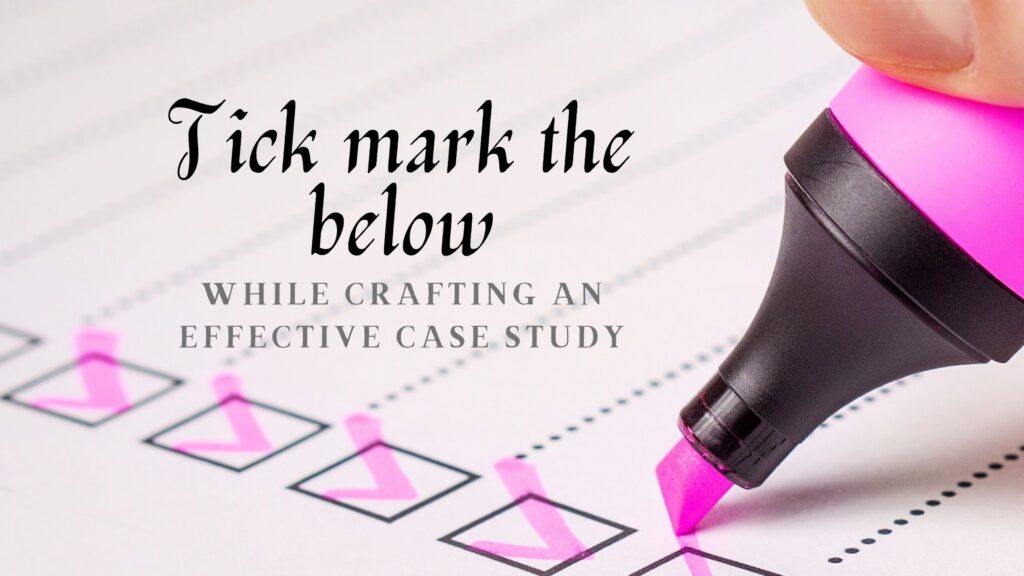If you just googled “How to Write a Case Study for a Project”, then I wouldn’t be wrong to assume that you are new to this style and are still wondering whether you will be able to do it right or not as a freelancer.
Let’s start it on a lighter note.
Do you like hearing stories?
Do you like reading stories?
Now, do you like writing stories?
If you nodded yes to the above and have this amazing ability of mushing emotions with facts in a storyline, then the niche of writing case studies is definitely your cup of tea.
As a budding writer, learning how to write a case study for a project the right way and including it in your portfolio could get you to leverage the exposure it has, making you an incredible amount of money.
Even as an experienced writer, this particular niche can open extra doors of income for you.
Writing case studies is not rocket science. Even a first-time writer can come out with flying colors with it, the only condition is learning how to do it correctly.
If you do not know it already, case studies are the description of genuine stories of how a real-time customer solved his problem, using the company’s product.
As writers, we all know how the art of story-telling plays a major role in writing when it comes to customer engagement.
From childhood, each one of us gets hooked to stories rather than hard-hitting write-ups written in a technically boring way.
Stories are interesting.
Case studies give you the leverage to do exactly that.
It can be tactical at times, incorporating facts and technicalities in the storyline in a gripping way, but what is writing if it’s only a piece of cake to ravish?
Don’t get nervous and believe me, it’s not that tough either.
One thing is guaranteed, if you master this skill, you will be one of the most saleable writers in the industry. Your clients will always look up to you, to take their next writing project without a second thought.
Hence, let’s get started on a promising journey, where learning how to write a case study for a project could be the turning point in your career, which can help your career jump by leaps.
If You Want To Learn How To Be A Freelance Writer With No Experience, Then Click Here.

WHAT IS A CASE STUDY?
Before learning how to write a case study for a project, we will quickly take a glimpse of what a case study is.
Putting it short and Crisp- Case studies are “Real-time Reviews” of a product or a service.
Let’s take a very simple example, of our day-to-day practice.
Imagine you are looking to buy a product online (on Amazon). One of the biggest criteria that plays a vital role in persuading your buying decision is Product Review.
Reviews from real-time users of the product.
The better the rating, the better your chances of buying the product. At least it should have positive ratings for the reasons you want the product for.
This is how a product moves forward to make a strong place in the consumer’s world.
To be more precise,
Case studies are longer versions of Reviews and Testimonials by the consumers.
They are so long that a writer is needed to write these case studies. Though it’s not only the length of the write-up that a writer is hired for, it’s also the tactful representation of facts and figures in an entertaining way.
It is an indirect form of marketing tool used by the sales team of a company to lure and persuade those clients who are already considering becoming your customers.
Case studies give these self-motivated clients the required buying push.
What does a Case Study actually contain?
The Case study defines real-time challenges that a customer faced and how the company’s product was able to get the customer out of that challenging situation.
It’s a power-pact storyline wherein we have your Hero (the customer) playing the lead. He faces some challenges which he is not able to subside and whatever he tries, fails to solve his issues. Then he comes into contact with a saviour (your client’s product), which brings him out of the mess.
Don’t make it as cheezy as I have narrated it to be :), but I hope I made my point clear.
As a Writer, you have to balance the spotlight between the customer and your client’s product. Nobody should out-power the other.
Both of them should get the required weightage in the story to make a case study look worthy,

HOW TO WRITE A CASE STUDY FOR A PROJECT?
Writing a Case study has 2 main bifurcations.
- Research
- Structuring and writing the article (The 8 Step Guide)
While researching the article is a time-consuming task, writing the article after the research may not look very tedious.
The length of the case study can be anything between 500 words to 1500 words, but the research process and formatting of the articles follow the same rules (whatever be the length)..

Research: Dig in deep into the unedited version of the story
Research is the most important thing to do,when you are learning how to write a case study for a project. If you do this correctly then the road ahead is not that difficult.
As mentioned above, your story has two main characteristics:
- The Saviour to the problem (Your clients’ product)
- The lead protagonist, your Hero (Your client’s customer)
For writing the case study, you should have all the detailed information about your client (the product/service they offer) and his satisfied customer (the one you are going to write the case study on).
For gathering the above information you need to schedule two interviews:
- First with your client
- Second with your client’s customer.
Kick start by Interviewing your client first
Make sure you talk to someone in the marketing department of the company who has enough knowledge to give you insights into the company.
Here is a list of questions you should be ready with, for a start:
- What is the history of the company?
- What are the products and services the company is into?
- What value addition do their products or services bring to the lives of their customers?
- How do they market their products?
- Who is their target audience?
- How will they be using the case study to market their product?
The style of writing may vary if they will be using the case study as a blog on their web portal rather than a lead magnet.
Hence, the purpose of creating the case study should be very clear in your mind as a writer to draft it in line with their marketing goals and make it as effective as possible.
Interview with the client’s customer (The Hero in Action)
He is the main lead in your story. The story is to be narrated around him, so you need to know him equally well as you know your client.
Here is a list of questions you should be ready with while interviewing the customer. Just keep in mind to inform the customer beforehand of the goal of the interview and the approximate time that you will need from them, before shooting questions at them.
Try to gain as many details of the customer as you can, as it will be easier for you to introduce and define your Hero’s character in your story.
It could include the following questions:
- What industry the customer works in (if it is B2B), or what does the customer do (if it is B2C).
About the company:
- Where is their company located?
- The number of employees working for the company.
- How long have they (as a company) been in the industry
- Their complete history.
About the person you are talking to:
- What is his position in the company,
- How long has he/she been working in the organization?
- What are his primary responsibilities,
The complete story behind the success of the product, which includes:
- The problem they met?
- Which were the other means did they try, to solve that issue?
- How did they come to know about your client’s product?
- The reasons for which they chose your client’s product?
- How did the product help the customer resolve the issue?
- What were the level of success and the final result the product gave?
- If they could provide relevant stats and metrics, that is proof of their success.
The more the number of answers you will able to get from your client and his customer, the better will be your chances to deliver a successful case study.
You can interview them via a video call or in-person, depending on the distance.
E-mails are also an option for getting information from them, but I would recommend a one-on-one interaction with them, as you will be able to ask more questions.

Structuring and writing the article (The 8 Step Guide)
You have done the groundwork (your research) and are ready with all the data for your writing.
The next step is writing a structured article that keeps up the flow and interest of the reader. This is the structure that I have been following:
1. Title –
You start with a catchy title, especially if your Case study is going to be aired as a blog post. It should be able to clearly display the crux of your write-up in one single line. The reader should be able to assume what will be inside the article.
Moreover, the headline should make him curious to go ahead and read the article. If he can relate to it, the connection is for sure to build up right at this stage.
In my headline, I include the result- customers name- company name.
2. Introduction –
We start with introducing our Hero -Protagonist-in the story (The Customer).
We give a brief about who the hero is, their brand, their niche, and the complete history so that people can frame a picture of the character we want to narrate about, in their mind.
3. Problem/Challenge faced by the customer –
Here we state the challenge our Hero in the story faces. You can be a bit descriptive here, by telling the readers:
- How the problem developed
- What were the situations that led to the problem
- Was it the problem that they were facing from before or some changes in the market conditions led to the problem
4. The Journey to resolve the problem-
In this portion, we describe the measure that the client took to resolve his issues before landing your client’s product.
You can briefly narrate how the other products failed to give the solution, your customer was looking at.
5. The Ultimate Solution-
Finally, at this stage, you introduce your client’s product in the case study. Here you describe, how did the company find your clients product.
5. The Implementation-
Next, is the recap narrative of how the customer used your client’s product to get the desired result. What was the company’s role in the implementation? You describe all the required help that your client provided to their customer to get the output they were looking for?
6. Final Outcome (Results)-
In this step, we give a detail of what was the result achieved by the customer. We tell the readers about the impact your client’s product made. Back your theory with cold and hard statistics and data.
Don’t forget to tell your readers, how satisfied the customer was, with your client’s product and how they would want to work with your client in the future as well.
Give them all the reasons to believe, that the way the product was able to benefit one customer, the same way it could help them also solve their problem.
If the reader can relate and empathise with the hero in the story, then your client has his next customer walk to him.
8. Call to Action-
The most important part- Ask your reader to take action. After reading the article what is that you want them to do?
Connect with your client – Right.
Hence, don’t forget to mention that. Give your clients contact details in the end, along with the point of contact that they can easily approach for their requirements.
Do remember, a call-to-action is directly related to the increase in the conversion rates for your client. The motive of writing a case study is that only.
Hence, emphasise the same and help your client achieve his goals.
Please note: When your story stays in the mind of the reader and can make the desired pull. That is when the motive of writing a Case study suffices.
CASE STUDY TEMPLATE
Keeping the above pointers in mind, A case study template will look somewhere like this. You can keep this handy for your quick reference, whenever you get stuck and start wondering- how to write a case study for a project?


TICK MARK THE BELOW WHILE CRAFTING AN EFFECTIVE CASE STUDY
- Strictly follow the structure, we discussed earlier (unless you are sure that there can be a better way to do it).
- A case study is the customer’s journey and the results they achieved. So do not brag too much about your product. As I told you, the right balance between the two is the key here.
- Your client and his product are the supporting characters in the story, so give them their due importance accordingly
- Add the relevant quotes and testimonials from the customer to make the story look more realistic
- Add visuals and images to make it look more engaging and soothing to the reader’s eyes.
- The article should be completely conversational. Try to narrate the story in a way that, even the general audience can relate to the story and be sure that the product will be equally beneficial to them.
- Give answers to as many questions as you can, that would probably arise in the mind of your reader, in a clear manner. If a product was able to solve your existing customer’s problems, so it will solve theirs.
- We often view someone else’s success as our own, so make sure the story looks convincing enough to be implemented.
- The case study is social proof that your client’s product actually works, hence the realistic approach in narrating the storyline is to be considered. If the reader by any chance feels the story looks artificial or made-up, the prospects will lose interest.
Hence back your story with real-time data and statistics, Do not make it too technical, but yes the inclusion of the same is necessary.
- Make it so impactful, that by the end of the story, the reader should be able to visualize themselves as the hero, using your client’s product.
Persuasion does wonders. You never know your present reader could be the protagonist (Hero) of the next case study you write for your client.

CASE STUDY EXAMPLE- THE WINNER FOR ME
The Case Study from gravitate design is one of the best examples of a long-form of case study. The structure and format that they have used to make such a long write easily readable is a job well done.

In the Case study, they have first introduced their client Global Expedition Group, so that the readers know what do they do. And then they have directly jumped to how they helped their client with strategies related to content Marketing.
They have backed their theory with strong statistics.
A great way to keep the readers hooked and keep them curious, in learning how did they actually achieve, what they achieved.
You will see that gravitate have broken their case study into bite-size content so that the readers can consume it easily.
The sections they have broken their case study describes re-branding, website design and copywriting.
Now you might be wondering- after telling you the complete 8-step formula of writing a case- study why did I give an example of a Case-study at that has violated the rules completely?
It’s because even when they went out of the league they still managed to grab the attention of their readers, in all their glory.
Though in the initial stages of writing a case study you can stick to the 8-step formula above, in the later stages of your career, I am sure you will be able to make out on your own, what will work best for your audience.
Going a little out of place, for getting awesome results is worth it, right.

FINAL WORDS
Coming to the closure of this tutorial on, how to write a case study for a project- don’t you think it is going to be pretty interesting to write one?
Case studies are one form of tactical writing. If you get a grip on the same or if you start liking this form of writing, then you will be scaling heights in a short period of time.
As a fresher, mould your mind in a way that it gets used to thinking creatively on the technical front. This may sound a bit theoretical as of now, with no relevance to get it done practically. But you just read this complete blog, on how to get it done.
So it is something practical that can be achieved,
In today’s era when even the worst of cooks are making awesome recipes (thanks to youtube ), don’t you think learning something new is not that difficult as it was sometime back?
This niche of Case study writing has huge potential in the market. It would be your guiding angel into the world of content writing and reaching a position in no time.
I hope I was able to solve all your questions on how to write a case study. Do let me know in the comments below if you have any more queries. Will love to hear back from you.
Happy Learning.


Pingback: How to Become a Content Writer- A to z of writing the right way
Pingback: How to write a white paper for the first time in 7 practical steps
Dear priyankaj.com owner, Your posts are always well-received and appreciated.